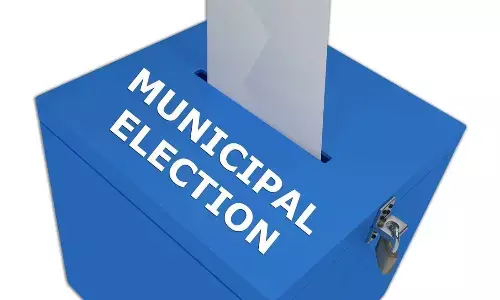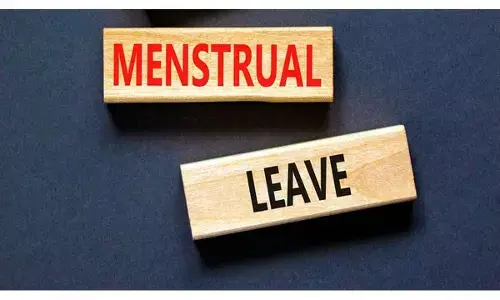Is it preventing affordable healthcare?

Is it preventing affordable healthcare?
No one would have ever thought or anticipated that Covid-19 would shake the world to such an extent that it is impacting, and perhaps changing and re-defining, every aspect of our lives
No one would have ever thought or anticipated that Covid-19 would shake the world to such an extent that it is impacting, and perhaps changing and re-defining, every aspect of our lives. It also proved that no country is invincible, no matter how developed, rich and powerful and it demolished the notion that these nations would have the best defence for its citizens, keeping in mind the best standards in healthcare systems that these countries boast off.
One area where we shall see predominant changes are, no doubt, in how we redefine our health policies and strategies by the public health experts, scientists, medical experts, strategists, healthcare providers, governments, healthcare organisations and pharmaceutical industry. Some of these stakeholders, more often than not, have their own diverse, and sometimes, conflicting interests to serve.
The current Covid-19 pandemic is an indication that inter-linkages exist between the healthcare systems and overall economic development. This will, in a way, force all the stakeholders to stand up and collaborate. There is perhaps no other option.
In the long run, countries with good, efficient, responsive and affordable healthcare systems would be able to tackle not only such pandemics but any form of health disasters. However, there are no short cuts and it will be a long drawn and tedious process to evolve appropriate systems.
Public authorities and private medical service providers across the world should be conscious of the fact that they have the obligation to ensure better healthcare systems through preventive and curative measures. Adequate attention is warranted to understand the ability of the general population at large to meet the rising healthcare cost. The fact that some State Governments (Delhi and Maharashtra) had to step in to put price caps on how much Covid-19 patients should be charged is one pointer to the fact that healthcare cost do become unaffordable for the population.
In general, it would be of interest to analyse which are the components of healthcare cost which are having a bearing on the individuals' capacity to afford? To have an understanding of some of these issues, we refer to a country-wide survey which will give us some indication and perhaps throw light on (i) how affordable is India's healthcare system; and (ii) which components of healthcare cost negatively impact patients the most.
The estimates from the 75th Round of the National Sample Survey Office (NSS) on "Household Social Consumption: Health, 2017-18" is to put forth analysis. In view of space constraints, we limit to analysing the expenditure on account of hospitalisation for two chronic diseases – Cancer and Diabetes.
As per NSS data, the average medical expenditure per case of hospitalisation for cancer was Rs. 61,215. Under medical expenditure component, around 30 percent of the cost goes into purchase of medicines while the balance 70 percent goes into expenditure on the package component of treatment (31.40 per cent), doctor's/surgeon's fee (11.41 per cent), diagnostic tests (10.88 per cent), bed charges (7.85 per cent), other medical expenses (7.9 per cent).
On the other hand, average medical expenditure per case of hospitalisation for diabetes was Rs. 16,091. Under medical expenditure component, 32.25 percent of the cost goes into purchase of medicines while the balance goes into expenditure on the package component of treatment (19.28 per cent), doctor's/surgeon's fee (13.71 per cent), bed charges (13.29 per cent), diagnostic tests (12.64 per cent), other medical expenses (8.83 per cent).
Thus, we observed that purchase of medicines accounts for a substantial share of expenditure in case of cancer and diabetes hospitalisation. This is more so when treatment of these diseases involves medication beyond hospitalisation.
Why this analysis is of importance is also the fact that high price of medicines has been cited as a major reason for the substantial 'out of pocket expenditure' in healthcare cost. The nature of pricing pattern of medicines are such that they are 'demand inelastic', i.e., prices do not inversely respond to changes in demand.
Because of asymmetric information, patients have little or no option to make purchase preference on the basis of price. It presents a striking example of a 'seller's market'. In this scenario, not surprisingly, high price medicines, often called 'blockbuster' drugs, generates huge revenue for firms.
Not only this, we also often observed wide variation in the prices of medicines across various therapeutic categories which point to an obvious fact that perhaps medicine prices do not reflect the actual production cost of medicines. Surprisingly, we observed the same nature of variation in prices of medicines which are regulated under the National List of Essential Medicines (NLEM) whose prices are fixed / revised as per the Drug Price Control Order (DPCO) of 2013.
Most doctors/physicians in India prescribed medicines by brands not by generic name. There is no option but to purchase medicines of a brand prescribed by doctors, thus eliminating the element of informed choice making behaviour whatsoever. Even in a situation where the doctors/ physicians prescribed medicines by generic name, the consumer would still be dependent on the pharmacies who would invariably dispense the higher price medicines (equated as being of higher quality) as it commands a higher trade margin for them.
It also begs the question as to whether high priced medicines are of comparatively higher quality in terms of its therapeutic benefits when manufacturing process of firms are subject to stringent and uniform application of the statutory approvals, inspections and quality controls?
One major factor that contributes to high medicine prices in India is the unreasonably high margins that the trade offers. Of late though, the Government has also recognised this and hence in order to cap the high trade margins, the NPPA (regulatory body) vide its notification dated 27.02.2019 had put a cap on trade margin of 30 per cent on 42 anti-cancer medicines.
Whether there will be similar policy stand for the sale of other medicines remains to be seen. One of the steps that can be quickly initiated to provide cheaper medicines is public procurement of medicines which have seen success in States like Tamil Nadu, Rajasthan, etc.
We feel that holistically, there should be a conscious and justified approach on how we balance private profit and public benefit when it comes to life-saving and life-extending medicines. Balancing the pricing of healthcare cost and at the same time providing a decent justified profit for the stakeholders is the need of the hour. Policies and standards would have to be re-worked to ensure timely accessibility, quality and affordable healthcare systems.
(Views and opinions expressed in this article are personal)
(Dr Palash Baruah is Senior Research Analyst, National Council of Applied Economic Research (NCAER), New Delhi and D L Wankhar is a retired Indian Economic Service officer)










